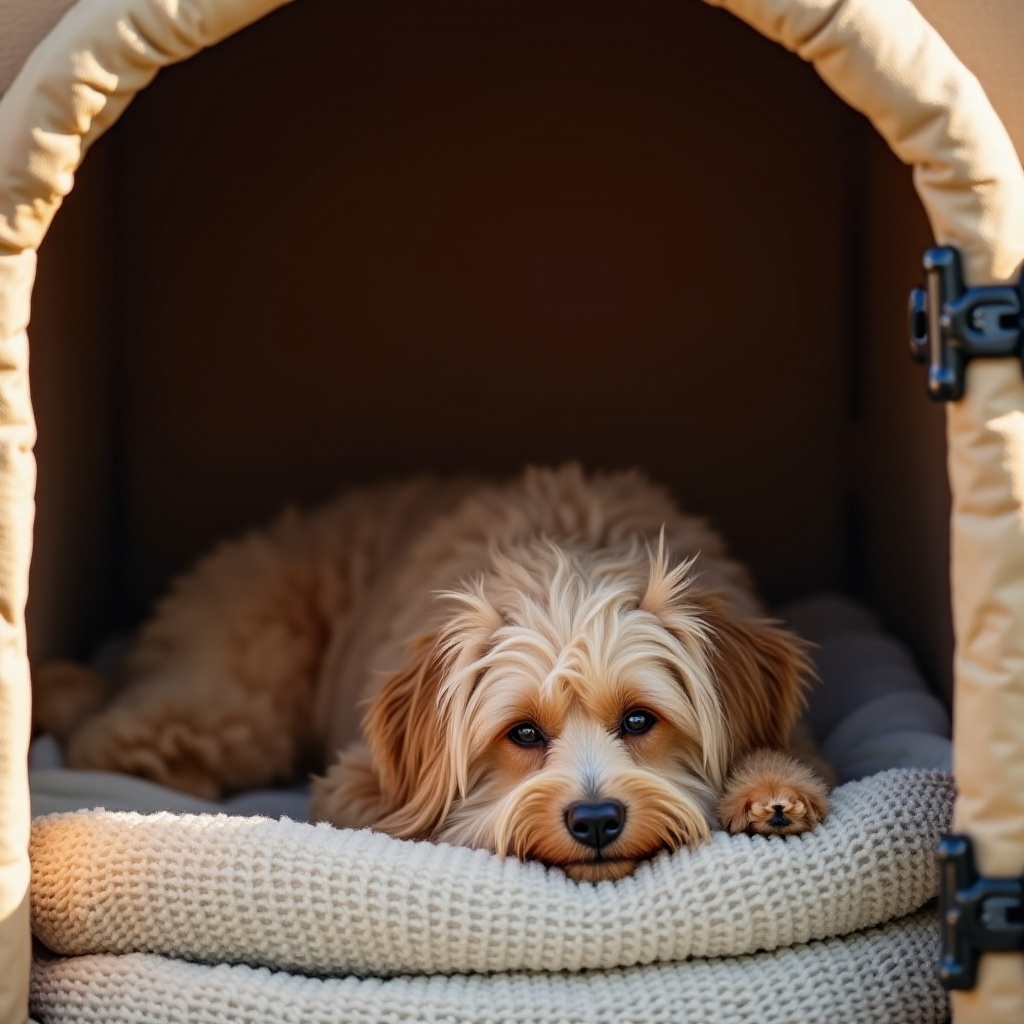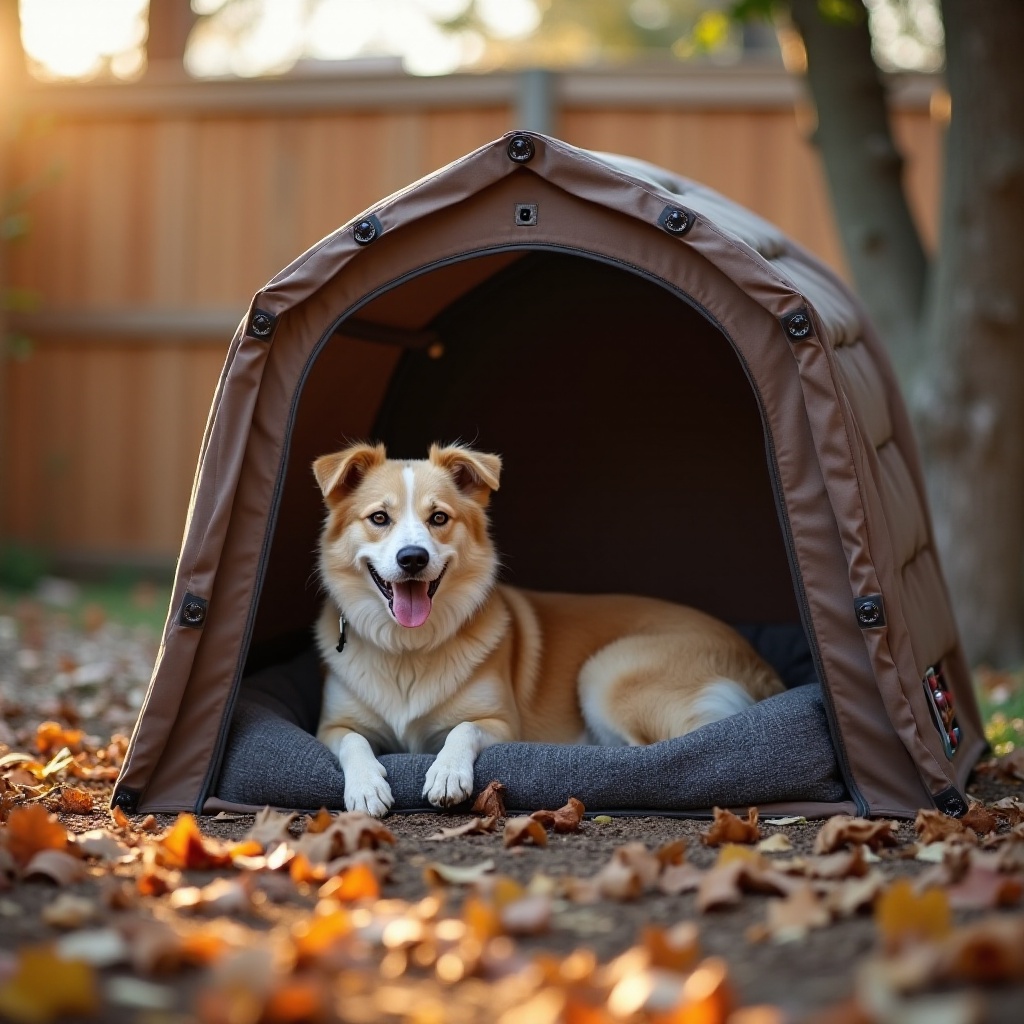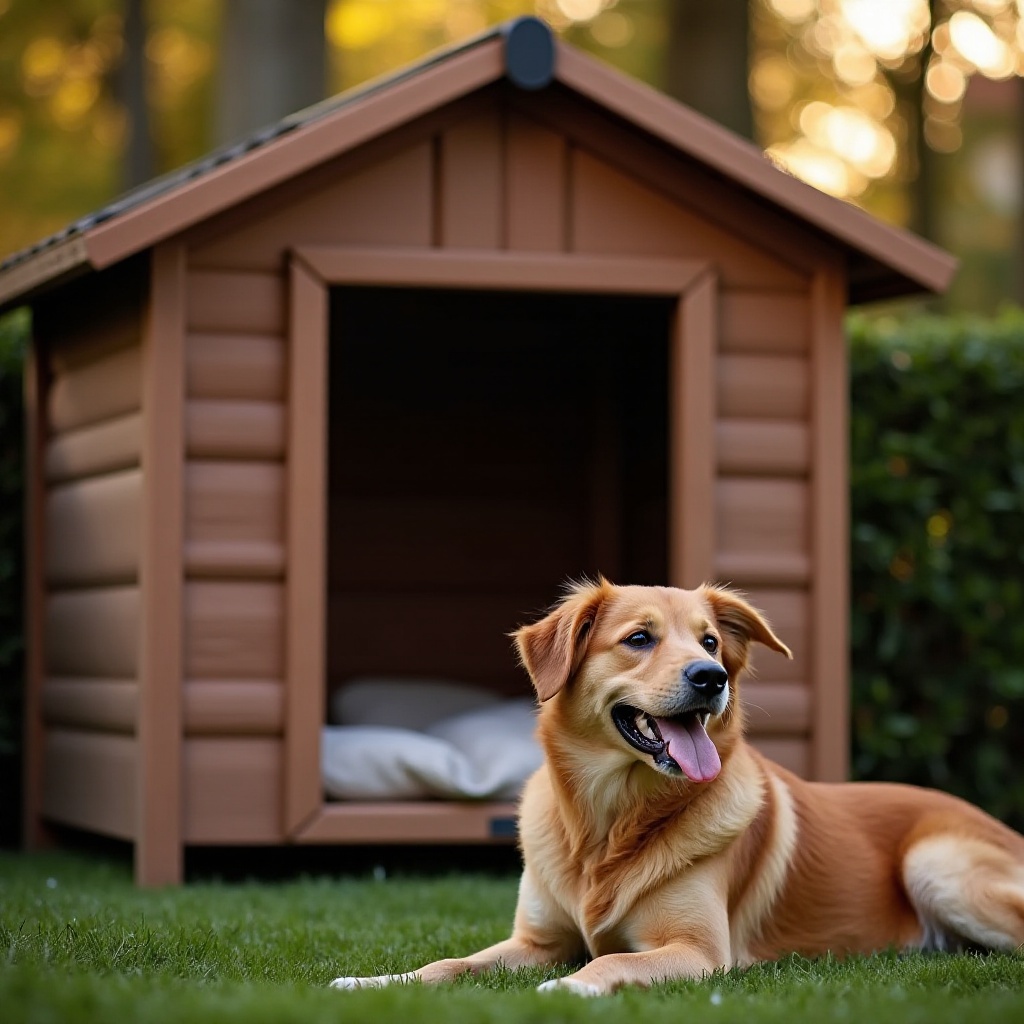Introduction
Winter can be tough on our furry friends, especially if they spend a lot of time outdoors. Keeping them warm is not just about comfort, but also about health and safety. In this guide, we will discuss the significance of keeping your dog warm in an outside kennel, provide insights into the best materials for dog costumes, explore different types of dog attire to fight the cold, and offer additional tips to ensure your pet’s well-being during the chilly months. Additionally, we’ll highlight some common mistakes to avoid to ensure your dog remains cozy and safe all winter long.

Why It’s Important to Keep Your Dog Warm
Dogs, like humans, are susceptible to hypothermia and frostbite. The cold can be particularly harsh on older dogs, puppies, and breeds that are not equipped with thick coats. Keeping your dog warm is crucial for preventing cold-related illnesses. Cold weather can stiffen joints, exacerbate arthritis, and reduce a dog’s ability to generate body heat. Moreover, a comfortable and warm environment contributes to a dog’s overall well-being and happiness.
Facing the cold with appropriate protection is essential. Following these insights, let’s delve deeper into the materials that can keep your dog warm.

Best Materials for Warm Dog Costumes
When it comes to keeping your dog warm, the materials of their clothing play a critical role. Here are some of the best options:
- Fleece: It is lightweight yet warm, making it ideal for dog sweaters and jackets. It dries quickly and retains heat efficiently.
- Wool: This natural fiber provides excellent insulation. It’s breathable but can be heavy and might cause itching in some dogs.
- Cotton: It’s soft and breathable, but not the best for wet or snowy conditions as it can retain moisture.
- Polyester blends: These synthetic materials are often designed to be moisture-wicking and insulating, perfect for outdoor dog wear.
Choosing the right material ensures that your dog’s costume is both warm and comfortable, providing the necessary protection against the cold.
Having discussed materials, let’s now look at the various types of dog costumes designed to keep them warm.
Types of Dog Costumes for Warmth
Keeping your dog dressed in appropriate attire can make a huge difference. Here are the types of dog costumes designed for warmth:
Sweaters and Jackets
Sweaters and jackets are the most common type of warm attire for dogs. They come in various designs and materials, including fleece, wool, and polyester. These can be easy to put on and take off, making them convenient for both dogs and their owners. Jackets often come with waterproof layers, which can be highly beneficial for wet or snowy conditions. They usually cover the torso, providing a good amount of warmth to the body’s core.
Full Body Suits
For extreme cold climates, full body suits are a great option. These suits cover most of the dog’s body, including the legs and belly, providing comprehensive protection against the cold. Full body suits can be particularly beneficial for smaller breeds or dogs with shorter fur, which might need extra coverage. They are often made from materials that offer both insulation and flexibility, ensuring your dog stays warm without feeling restricted.
Layering Options
Layering is a practical solution for keeping your dog warm, much like how humans wear layers to stay cozy. You can combine a t-shirt or light sweater underneath a heavier jacket for added insulation. Layering allows for versatility; you can add or remove clothing based on the temperature. This method is especially useful when transitioning between indoor and outdoor environments.
While clothing is essential, there are other effective strategies to keep your dog warm in an outside kennel.
Additional Tips to Keep Your Dog Warm in an Outside Kennel
Beyond clothing, maintaining a warm kennel environment is crucial. Here are some tips:
Insulating the Kennel
Insulation is key to a warm kennel. You can insulate the walls and floor of the kennel using materials like foam boards or insulated mats. Placing a windbreak around the kennel helps protect it from harsh winds. Additionally, raising the kennel off the ground can prevent cold from seeping in through the floor.
Using Warm Bedding
Bedding is crucial for warmth. Use materials like straw, hay, or specially designed heated pet mats. These options not only provide comfort but also help retain and generate heat. Regularly check and replace the bedding to ensure it stays dry, as damp bedding can draw heat away.
Additional Accessories
To further protect your dog, consider accessories such as booties and hats. Dog booties protect your dog’s paws from the cold ground and ice, preventing frostbite. Hats can provide extra warmth to the head and ears. Accessories should fit well to avoid discomfort and should be regularly checked for wear and tear.
Lastly, avoid these common mistakes to ensure your dog stays warm and safe.
Common Mistakes to Avoid
Avoiding common mistakes can ensure your dog stays warm and safe:
- Overheating: While it’s important to keep your dog warm, avoid overheating them with too many layers or heavy clothing.
- Ignoring Size and Fit: Ill-fitting clothing can cause discomfort or limit mobility, making it crucial to choose the right size.
- Neglecting Regular Checks: Regularly check the kennel and clothing for dampness or wear. A single night in a damp bed can lead to health problems.
Conclusion
Ensuring your dog stays warm in an outside kennel is vital for their health and happiness. By selecting the right materials, using appropriate clothing, and following additional tips for insulation and bedding, you can provide a cozy and safe environment for your pet. Avoid common mistakes, and you’ll keep your furry friend comfortable through the coldest months.

Frequently Asked Questions
What are the signs that my dog is too cold in the kennel?
Signs that your dog might be too cold include shivering, whining, acting anxious, moving slower than usual, and curling up tightly to preserve body heat.
How often should I check on my dog in the outside kennel during winter?
Check on your dog at least twice a day, more frequently during extremely cold weather. Regular checks help ensure your dog’s well-being and comfort.
Are there specific dog breeds that need more warmth than others?
Yes, small breeds, short-haired breeds, puppies, elderly dogs, and dogs with health issues often require more warmth. Breeds like Chihuahuas, Greyhounds, and Dachshunds are particularly sensitive to the cold.
